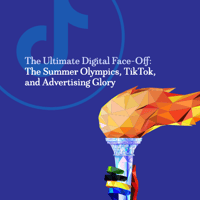The Surprising Pros and Cons of Bidding on Branded Keywords JJ Zoch, Media Planner & Buyer atThe...
How Authenticity Became Cool

Steve Meyer, Chief Strategist at The Karma Group
Cool was starting to change. It was a bit subtle at first, so few people realized it, but a seismic shift was taking hold. For forty years prior, going back to the end of World War II, being cool meant one of two seemingly opposite but co-dependent things—being a rebel or being a conformist. The pattern was tried and true: Counterculture trendsetters (precursors to influencers), would debut something daring or new, and the market would follow. Examples included The Beatles, who reintroduced longer hair on men, and Jennifer Beal’s iconic dropped shoulder sweatshirt in the movie Flashdance. The rebels defined cool by defying the norms, and others became cool by conforming to the new norm.
Boomers and early Xers who came of age during these decades self-identified as being “cool” by keeping up with the trends. Likewise, product developers and marketers kept keen and vigilant eyes out for hints of the next big, or even subtle, thing. It wasn’t long before advertisers figured out they could get ahead of the game by seeding the next trend. They could create “cool”. Perhaps the greatest success story in this regard was Nike’s partnership with Michael Jordan and the introduction of Air Jordans in 1985. Not even a Members Only jacket was as cool.

The Shift to Authenticity
By the time the OG Millennials were in first grade, this formula was on life support. The rebel/conformist recipe for cool was being replaced by authenticity. You were cool by being true to your authentic self, not by conforming to a market-driven standard.
This new reality hit home in 1989 when Oldsmobile hired Elvis Presley’s daughter, Lisa Marie, as its spokesperson to help reinvent the brand by trying to convince America that this is not your father’s Oldsmobile. Except it was. Using someone whose entire identity was defined by her father to convince people that the brand’s identity was not defined by your father was a strategic train wreck. What’s more, everyone saw through it. The jig was up. The whole idea of cool had become manufactured, manipulated, and fake. And that’s not cool.
The backlash was swift, and authenticity became cemented as the new cool. After all, someone who is cool does not try to be someone they’re not. Just be yourself. The famous “Got Milk” ad campaign of the 1990s illustrates this very well. The ads featured people, mostly celebrities (including Bart and Lisa Simpson), of all generations and ethnicities sporting milk moustaches while simply being themselves. Rather than being photographed with perfect hair and makeup that conformed to a beauty standard, they were presented with milk on their upper lips. And the culture agreed: this is what cool looks like—imperfection, authenticity, diversity, humanity. Dove leaned heavy into this new paradigm when it launched its famous Real Beauty campaign in 2004 and the payoff was huge.

Organizational Branding Follows Suit
Beyond product branding, organizational branding followed the same trajectory. From the 1950s through the 1980s, career success depended on conforming to the corporate culture. A lot of emphasis was placed on having the right suit, the right haircut, and the right membership at the right country club. That’s how it was. But by the mid to late 1990s, the brightest young talent was rejecting those expectations. Focus groups we conducted at the time for a forward-thinking Fortune 200 employer revealed that the emerging white collar workforce’s biggest career anxiety was the expectation to become someone they’re not.
In contrast to earlier generations who found security and validation in conforming, these late Gen Xers wanted to work for companies who welcomed and accepted them for who they were. A cool workplace was somewhere where they could be their authentic selves. Not surprisingly, the broader cultural shift emphasizing diversity and inclusion was taking root at the same time.
Authenticity as Word of the Year
The fact the Mirriam Webster finally got around to declaring “authenticity” as their 2023 Word of the Year seems to be a decade in the making. One could argue it’s the word of this entire generation. It’s also no wonder that the Oxford Dictionary’s declaration of "rizz" as Word of the Year gets more media attention; authenticity seems like old news.
If you want to get authentically nerdy about all this, ask us how authenticity as cool is shaping the cultural transition from tribalism to pluralism in a way that is redefining diversity, equity, and inclusion. If you’re not confident that your organizational culture and brand is poised for both authenticity and pluralism, we should probably have that conversation sooner rather than later.
–
Steve Meyer, Chief Strategist at The Karma Group
Steve has been an integral part of The Karma Group since 1990, when he was the very first copywriter hired by the company. Since then, he has also served as Co-President, Principal, Chief Strategy Officer, and Executive Creative Director, and now functions as Chief Strategist.
His ability to weld a comprehensive perspective with synthesizing thought has helped The Karma Group deliver results for companies such as Kimberly-Clark, Caterpillar, Oshkosh Corporation, the Green Bay Packers and many other national and international companies.
As a lifelong learner with a passion for understanding how people make decisions, Steve incorporates the principles of economic and social psychology in his collaboration with Karma team members. As an example, this approach helped Karma’s research team develop the RiverMapping metaphorical research methodology that was featured in Harvard Business Review.




